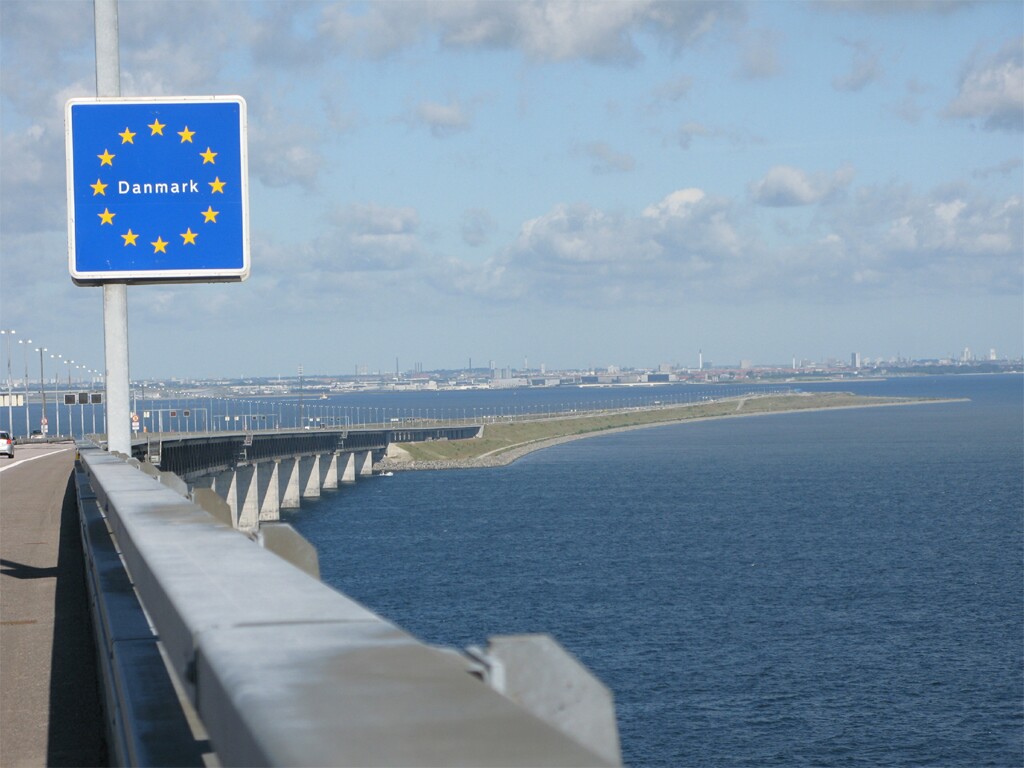 |
| A view of Malmo, Sweden, from the bridge just before its becomes a tunnel. |
 |
| The artificial island of Peberholm |
The bridge runs nearly 8 kilometres from the Swedish coast to the artificial island of Peberholm, which lies in the middle of the strait. The remainder of the link is by a 4 km tunnel from Peberholm to the Danish island of Amager.
 |
| The Öresund tunnel |
The Øresund Bridge is the longest combined road and rail bridge in Europe, and connects two major metropolitan areas: Copenhagen, the Danish capital city, and the major Swedish city of Malmö. It connects the road and rail networks of Scandinavia with those of Central and Western Europe. A data cable also uses the bridge to carry all Internet data transmission for Finland.The international European route E20 crosses via the road. The work was completed six months ahead of schedule.
 |
| A view from NASA's a satelite |
The justification for the additional expenditure and complexity related to digging a tunnel for part of the way, rather than raising that section of the bridge, was to avoid interfering with air traffic from the nearby Copenhagen International Airport, to provide a clear channel for ships in good weather or bad, and to prevent ice floes from blocking the strait. The Øresund-link crosses the border between Denmark and Sweden, but there are no passport inspections.
The Øresund Bridge was designed by the Danish engineering firm COWI. The Øresund Bridge received the 2002 IABSE Outstanding Structure Award.
As I traveled through the tunnel on the 22nd of February, my little niece Olivia Jeanine Joyner moved through another passageway in South Africa, and was born!
